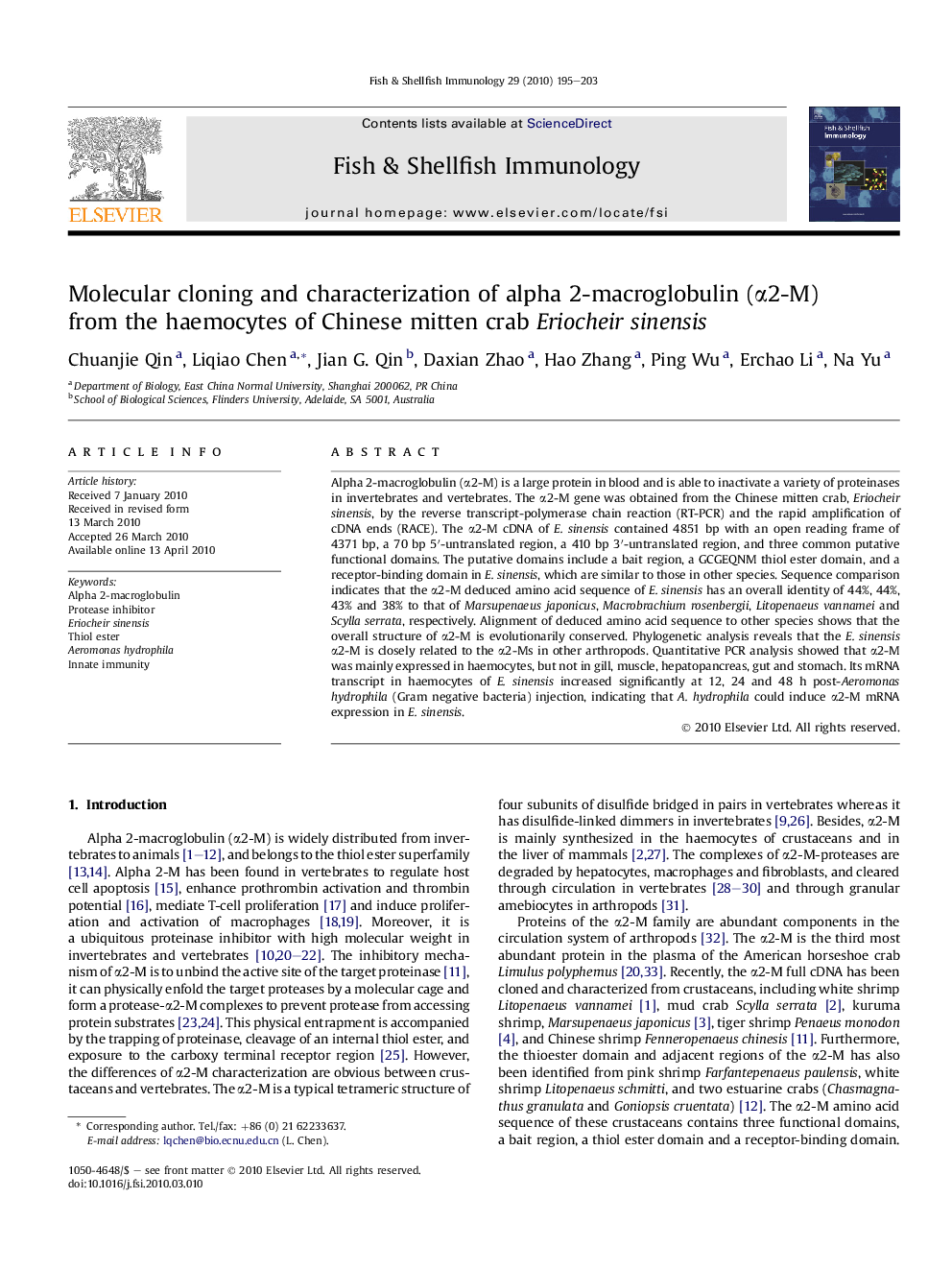| Article ID | Journal | Published Year | Pages | File Type |
|---|---|---|---|---|
| 2432854 | Fish & Shellfish Immunology | 2010 | 9 Pages |
Alpha 2-macroglobulin (α2-M) is a large protein in blood and is able to inactivate a variety of proteinases in invertebrates and vertebrates. The α2-M gene was obtained from the Chinese mitten crab, Eriocheir sinensis, by the reverse transcript-polymerase chain reaction (RT-PCR) and the rapid amplification of cDNA ends (RACE). The α2-M cDNA of E. sinensis contained 4851 bp with an open reading frame of 4371 bp, a 70 bp 5′-untranslated region, a 410 bp 3′-untranslated region, and three common putative functional domains. The putative domains include a bait region, a GCGEQNM thiol ester domain, and a receptor-binding domain in E. sinensis, which are similar to those in other species. Sequence comparison indicates that the α2-M deduced amino acid sequence of E. sinensis has an overall identity of 44%, 44%, 43% and 38% to that of Marsupenaeus japonicus, Macrobrachium rosenbergii, Litopenaeus vannamei and Scylla serrata, respectively. Alignment of deduced amino acid sequence to other species shows that the overall structure of α2-M is evolutionarily conserved. Phylogenetic analysis reveals that the E. sinensis α2-M is closely related to the α2-Ms in other arthropods. Quantitative PCR analysis showed that α2-M was mainly expressed in haemocytes, but not in gill, muscle, hepatopancreas, gut and stomach. Its mRNA transcript in haemocytes of E. sinensis increased significantly at 12, 24 and 48 h post-Aeromonas hydrophila (Gram negative bacteria) injection, indicating that A. hydrophila could induce α2-M mRNA expression in E. sinensis.
